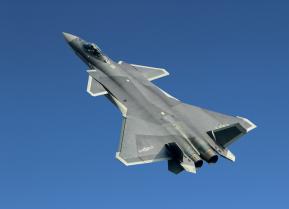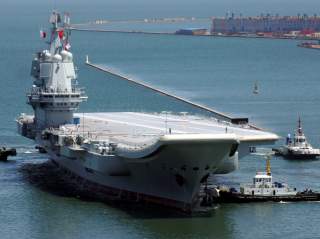The Pentagon Just Dropped a Massive Report on China's Military. Here's What You Need To Know.
Mandated in the fiscal 2000 National Defense Authorization Act, the annual report is an important source of regular updates regarding China’s growing military capabilities and its expanding range of security-related activities.
The Department of Defense has released the latest edition of its report on Chinese military and security developments.
Mandated in the fiscal 2000 National Defense Authorization Act, the annual report is an important source of regular updates regarding China’s growing military capabilities and its expanding range of security-related activities.
Since the People’s Republic of China halted the publication of its biennial defense white papers in 2015, there are few other good sources of information on one of the world’s largest militaries.
An important element of this year’s report is the expanded discussion of China’s security-related activities, providing a broader, fuller assessment. There is an extensive discussion of China’s Belt and Road Initiative, its array of investment projects previously known as the “One Belt, One Road Initiative,” stretching from China to Europe, into the Indian Ocean to Africa, and even across the Pacific to South America.
The report discusses the security implications of the Belt and Road Initiative, even though it is primarily a set of economic and political initiatives with limited direct military impact.
This more comprehensive analysis is important, as it captures the Chinese whole-of-society approach to national security. To understand Beijing’s challenge to the U.S., it is vital to incorporate not only concerns about the People’s Liberation Army and the Chinese government, but also consideration of its diplomatic and economic engagement globally.
This year’s report also exemplifies why issuing an annual report is important. It highlights the various changes that have been undertaken since the announcement in December 2015 of a series of fundamental overhauls and reforms of the People’s Liberation Army. It thus provides a new snapshot of the various improvements and changes in the Chinese military as it continues to modernize all of its services.
Much discussed, for example, has been the steady extension of the People’s Liberation Army’s reach. News reports emphasized that it is acquiring systems that will allow it to strike the United States.
The report also notes that “one of the most significant [Navy] structural changes in 2017” has been the tripling of the size of the Chinese marine corps. Coupled with China’s first official overseas military base (in Djibouti), it is clear that China is expanding its force-projection capacity.
As important, however, have been the changes in the People’s Liberation Army’s organization and doctrine. This year’s report devotes substantial discussion to the evolving organization of PLA Army forces, as well as changes in the Central Military Commission, which manages the overall military.
These changes are fundamental, but have taken the past two years to become much more visible. The shift from divisions as the cornerstone of China’s ground forces to brigades had long been discussed, but only now is there sufficient evidence to gauge Beijing’s progress.
The changes in the Central Military Commission structure have been even more complex. When the changes were first announced, the commission initially appeared to be expanding from four general departments to 15 departments, commissions, and offices.
Recommended: What Will the Sixth-Generation Jet Fighter Look Like?
Recommended: Imagine a U.S. Air Force That Never Built the B-52 Bomber
Recommended: Russia's Next Big Military Sale - To Mexico?
Recommended: Would China Really Invade Taiwan?
It is now clear, however, that in fact the commission has shrunk, with only seven members, rather than the pre-reform 10. Of particular note is the removal of the Logistics Work and Equipment Development departments from the main Central Military Commission structure.
The fate of these two departments, which had long been part of the Central Military Commission, suggests that many of the 15 departments, commissions, and offices are of lesser importance to the reformed Central Military Commission.
Indeed, the reformed Central Military Commission, as of 2018, now includes the defense minister and the newly created Discipline Inspection Commission (responsible for rooting out corruption).
That suggests that the focus is on warfighting (the Joint Staff Department head is still part of the Central Military Commission) and also on political and general discipline (the responsibilities of the Political Work Department and Discipline Inspection Commission). That all raises questions about the actual state of the People’s Liberation Army.
Given the need to provide regular updates on the state of the modernizing People’s Liberation Army, especially in light of China’s decision to limit the transparency of its forces by suspending the publication of its own defense white paper, it is essential that the Pentagon continue to publish the report.
China’s regular protests about the report, which it says contributes to the idea of a “China threat,” belie the reality that it is China’s lack of openness, expanding reach, and objective improvements in its capabilities that generate a sense of threat, not the U.S. government’s reporting on it.
This first appeared in The Daily Signal here.


